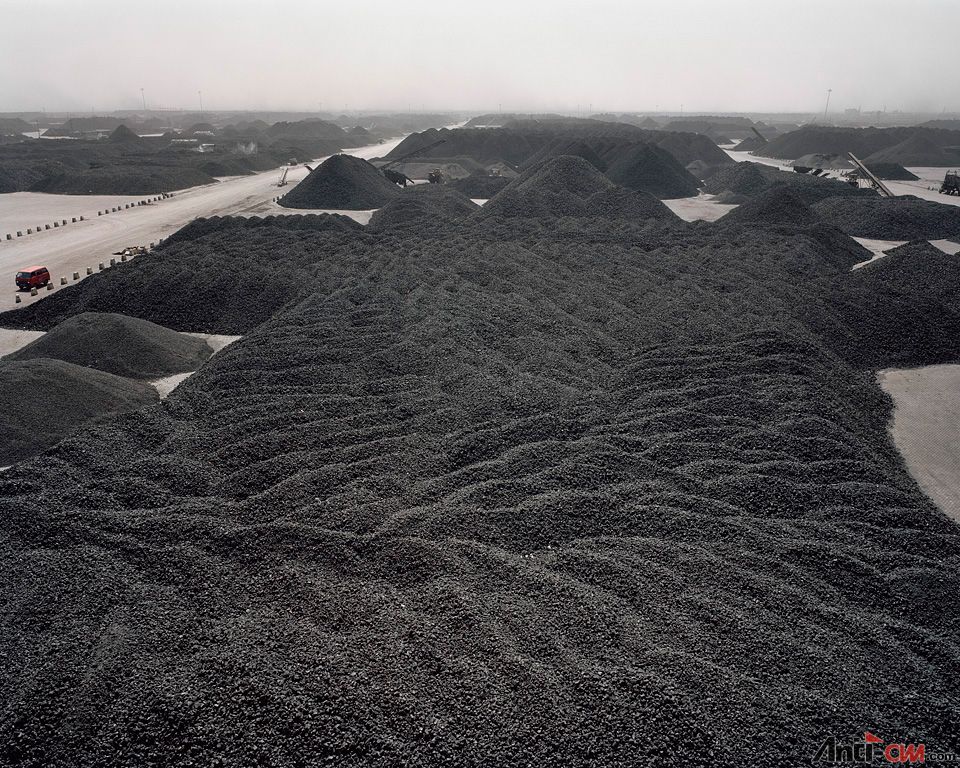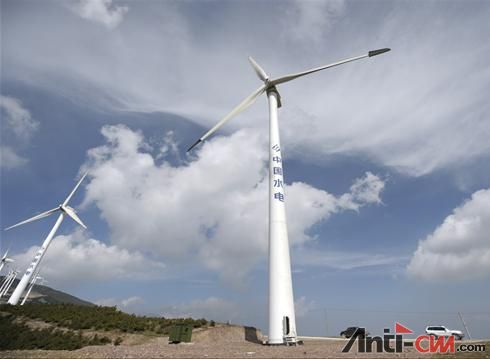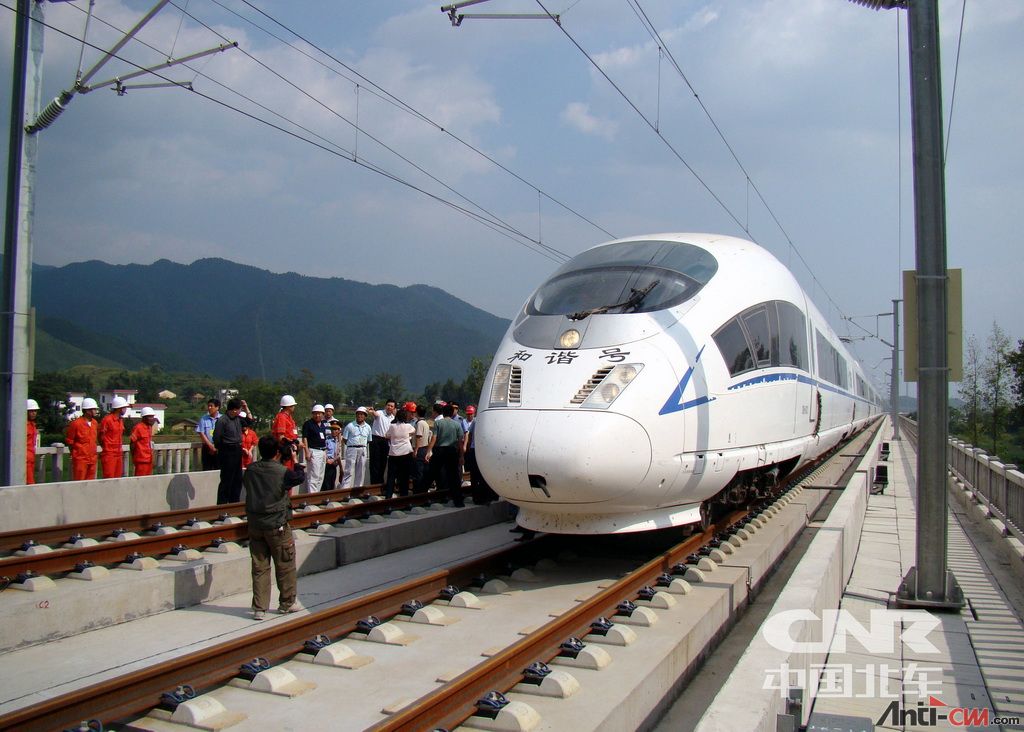|
|
楼主提示:如题,将下文全篇翻译成中文(要求语句通顺,谢绝机译~),即得800金条;如能将第二张图中的文字改为中文,另行加奖700金条O(∩_∩)O~
http://www.worldchanging.com/archives/011075.html
Alex Steffen, 28 Jun 10

(Urban Renewal #5, City Overview From Top of Military Hospital, Shanghai, 2004. By photographer Edward Burtynsky; used with permission.)
If we want to anticipate the future of cities, we should look to China. China is urbanizing at a rate unprecedented in history. Between now and 2030, according to the McKinsey Global Institute, Chinese cities are expected to add more than 350 million people, swelling to a total urban population of more than a billion. By then, China will have more than 220 cities with populations of more than a million (by comparison, Europe today has only 35 cities with one million+ inhabitants), and 24 emerging megacities with more than five million inhabitants.
Building that many cities is an almost incomprehensibly huge task. It will demand massive investments in housing, transportation, water and energy systems. In the next 20 years, McKinsey estimates that China will build as many as 50,000 skyscrapers (which might be thought of as "ten New Yorks"). It will build hundreds of millions of apartment buildings. It will design and build more than 170 completely new mass-transit systems, thousands of new major hospitals and universities, hundreds of thousands of parks, schools, fire stations and community centers. The boom China is expected to continue to go through, even in an economic downtown, boggles the imagination of North Americans and Europeans, who are used to thinking of cities as stable and slow to change.
All that new building could come at a massive cost, so it is critical that China's cities be compact, built green, powered by clean energy, and served by mass transit and sustainable food systems.

(60 Chinese Cities with a Population of Over 1 Million: Infographic compares population of China's cities with some of the world's more commonly known 'large' cities. Via Chinfographics.)
ENVIRONMENTAL AND HEALTH WOES
The need for smart urban innovation and increased clean energy is great in China, not only from a future perspective, but also from present need. Already, China is teetering on the edge of ecological catastrophe. It suffers from some of the worst air pollution in the world. For instance, Hong Kong's air quality meets the bare minimum World Health Organization standards on average of only 41 days a year, and air quality is, if anything, much worse in other cities. Indeed, the World Bank says that 16 of the 20 most polluted cites in the world are in China, and 400,000 people a year die as a result of poor air quality.
The picture only worsens when we look at the broader picture. China is suffering rapid desertification, has lost massive amounts of top soil from its farmlands and one third of its land is affected by acid rain. A 2010 investigation revealed that Chinese waterways were more than twice as degraded as previously reported. Two thirds of China’s rivers and lakes are dangerously polluted (cancer rates are extraordinarily high in riverside cities in China); the Yangtse River is now biologically dead for long stretches of its run, and more than 340 million Chinese have no access at all to safe drinking water. The natural systems China's people depend on for the basics of life are unraveling at astonishing speed.
A CARBON-NEUTRAL CHINA?
The magnitudes of these pollution problems in China are alarming in their own right, but they’re also bound up with another planetary problem: China is now the world's largest emitter of greenhouse gasses. While it's true that per person, China’s emissions are still relatively moderate, the country’s increasing prosperity is changing that. Additionally, the sheer size of the nation means that globally, humanity cannot reach the goal of planetary carbon-neutrality without China changing its ways. A carbon-neutral China is a prerequisite for a climate-stabilized world.
Is a bright green China even possible? Perhaps more possible than we usually think. Many people in the U.S. and Europe start from the assumption that China will behave in the future as it did in the past: slap up sprawling cities of shoddy, inefficient buildings, powered by dirty coal and driven economically by toxic manufacturing. But there are signs that China is already beginning to embrace a different path forward, perhaps preparing to embrace the idea that a climate-friendly economy is the key to its future prosperity.
To unlock that carbon-neutral prosperity, China needs to remake its cities, which makes their design and development one of the most important leverage points in the world for building a bright green future. If China's cities are built with dirty energy and outdated designs, the world's problems will only intensify. But signs abound that China is poised to develop along very different lines. Here’s a look at the current state of energy production and renewable energy investment, and urban innovation happening in China.

(Tanggu Port, Tianjin, 2005. By photographer Edward Burtynsky; used with permission.)
ENERGY
A major cause of China's environmental and health woes is the source of its power, which at this point is overwhelmingly generated by burning coal (often in inefficient and dirty power plants). A future of a billion Chinese living in coal-powered cities would be grim no matter what else happened, but there are real signs that that fate is not inevitable. Indeed, China is becoming a world leader in clean energy.
China is fourth in the world for installed wind energy capacity, according to the Worldwatch Institute, and is on track to install 100 gigawatts of wind power by 2020. And China has some of the best wind resources in the world: the journal Science published a 2009 report by researchers from Harvard and Tsinghua Universities demonstrating that for an investment of less than $1,000 per citizen, China could supply all its predicted demand for electricity with wind power by 2030.

(Photo of windmills in China by Liu Jin via USA Today.)
China is already the world's leading producer of solar panels, according to the Earth Policy Institute, having jumped its output from 40 megawatts in 2004 to 1,848 megawatts in 2008, with continued expansion accelerating. While most of those solar panels have been manufactured for export, China is increasingly adding solar power to its energy mix, including building a 2,000 megawatt project in the Mongolian desert, which, when completed in 2019, is expected be the largest solar photovoltaic facility in the world.
Still, even with bold efforts in wind, solar and other renewables, China is expected to burn a lot of coal while it builds new systems. ‘How much’ is still up in the air, so to speak, which is why a whole host of programs have been launched to help increase the efficiency of Chinese coal-fired power plants, speed adoption of energy efficiency standards in Chinese industry, and focus product design on sustainability. China has a very long way to go, but it is clear that there's at least a chance that China could dramatically slash its power emissions over the next two decades, even while a billion Chinese citizens go about building their new cities.
URBAN INNOVATION
Much has been made of the spread of cars and suburban sprawl in China. While the growth of traffic jams in Chinese cities is certainly impressive, it's far from the only story, and American-style subdivisions are an extremely rare novelty. Urban China continues to be a nation mostly of bicyclists, pedestrians, bus riders and train passengers. What's more, many young Chinese are well aware of global trends in designing livable cities through smart growth and new transit options and are seeking Chinese versions to guide the growth of their own cities. While some might insist that Chinese urban planning is still a contradiction in terms, there is plenty of urban innovation happening in China.
Some of that innovation has been halting. Take Shanghai's Dongtan project. Unfortunately, the Dongtan project stalled when officials involved in the project were caught up in an unrelated scandal, and when the global recession dried up capital that could have been invested in what might have been a risky project. Though the plans are still officially on the books, there is no deadline for moving forward with building this eco-city. More promising perhaps are the plans for an eco-city in Tianjin.
Other innovations have been more successful. China is home to a host of smaller-scale demonstration projects and neighborhood developments that have incorporated newer green features. What's more, the 2010 Shanghai Expo -- with its motto "Better City – Better Life" – has greatly accelerated the Chinese conversation about what makes a livable city and how new development can be concentrated to produce more walkable, sustainable cities. Green building practices have also begun to spread fairly quickly. China has created its own green building standard, the Three Star system, that, so far, both compares favorably to other nations' green building certification schemes (PDF) and seems to be being adopted more rapidly. Chinese buildings on the whole -- especially older buildings -- are still shockingly poorly designed and inefficient, but a budding retrofit industry and official support for the idea of raising the energy efficiency of existing buildings seems to indicate that more widespread improvements may be in the works.

(Image of Wuhan-Guangzhou high-speed train via Morrison World Media.)
China’s focus on improving their train infrastructure has been very successful and a place where China is becoming a world leader. The McKinsey Global Institute says Chinese cities are undergoing the "greatest boom in mass-transit in history." China is also launching the world's boldest plan for expanding its inter-city rail network. They recently opened the high-speed line Harmony Express, which links the cities of Wuhan and Guangzhou, has cut travel time between the two boomtowns from eleven hours to three. Construction has begun on another 30,000 kilometers of rail tracks, including 9,000 kilometers of high-speed rail lines, which will connect all of China’s major cities by 2015. Businessweek has reported on plans to extend the nation's high-speed rail network through Russia and as far as Europe, enabling passengers to travel the 8,000 kilometers between Beijing and Berlin at 320 kph. This would offer a competitive alternative to air travel, especially as the cost of flying rises with fuel costs and carbon taxes.
These urban innovations of increased development of eco-cities, green building standards, and critical train infrastructure are a good start, but to say much work remains to be done would be an understatement.
A CARBON-NEUTRAL CHINA NEEDS BRIGHT GREEN CITIES
Yet, despite the long odds China faces, it's worth stopping to consider China's strengths and imagine Chinese success. Indeed, Chinese cities could, by all accounts, use a lot of help envisioning and innovating the solutions for more sustainable futures. The Shanghai Expo is a terrific first cultural step, but China will need to create new imaginings of itself at a pace and on a scale we're never seen before. Imagining the future is a boom industry in China.
And of course, none too soon. Chinese cities are one of the most important leverage points in the world for building a bright green future. If China’s cities move away from outdated energy and urban design models, towards dense and sustainable urban centers powered by clean renewable energy, filled with green buildings and serviced by mass transit, then not only will global emissions level off more quickly, but a resulting boom in urban innovation will mean the world has a real shot at transforming prosperity everywhere along more sustainable lines. Bright green Chinese cities could change the future. |
|